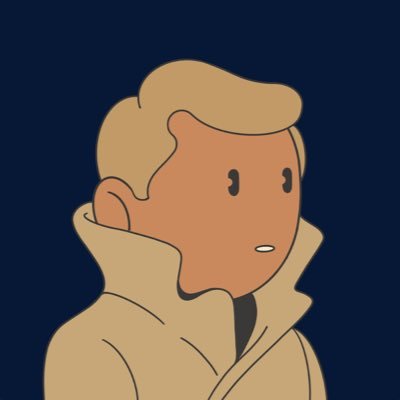About serezha

I'm Serezha aka graphica.png, consider me the juxtapozer of uncanny ideas. Studied Illustration and Graphic Design. I started learning about art and have been pursuing it for about 15 years, focusing mostly on painting and drawing by hand while also keeping up with new art-related technology as it came out. My latest venture has been into AI, collaborating to create overpainting and collages while finding inspiration both in hard and soft elements. Currently pursuing my destiny to make things lil' less perfect and lil' more interesting, a mission is to find something fascinating in the mundane.
An interview with serezha led by Carlo Borloni


Can you tell us a bit about your artistic journey?
You've been in the art world for 15 years, transitioning from illustration and graphic design to your current multidisciplinary practice. What pivotal moments or experiences have shaped your evolution as an artist?
The early years of my journey were a lot about exploration, constantly trying new techniques and experimenting across disciplines. That curiosity hasn't faded, but it's now channeled into a more focused pursuit of specific fields and knowledge.
Beyond any formal training, I was always out there learning, testing, and creating on my own terms. A key turning point came a few years ago when I made a conscious choice to strip away the "glitter" and get back to basics.
Rather than relying on shortcuts, I grounded my process in the fundamentals, even as I continued to embrace new technology. This shift helped me stay true to my vision and build a more intentional, authentic approach to my art.


How did your background in illustration and graphic design influence your current style?
What techniques or lessons from those early disciplines do you still apply, especially in your recent work with AI and collages?
My background in illustration and graphic design taught me to lean on foundational principles, color, composition, shape, line. I've always prioritized mastering the basics of any tool or technique before building up to more complex, sophisticated processes.
Over time, I also learned that completing a piece is more valuable than chasing an ideal of perfection that may never be realized. As I've come to trust my process, I now see each work as part of an evolving sequence, each piece serves as both an experiment and a step forward in my journey.
These iterative stages, both artistic and technical, allow my ideas to progress, influencing and enriching the next creation.


Your latest collection, Emptyism, explores minimalist and escapist themes.
What inspired you to pivot towards these "empty" landscapes and spaces, and how does this contrast with your previous, more intricate work?
I began noticing a trend toward visually packed, busy compositions, something I was creating a lot of myself. This collection is a departure, a chance to embrace moments of stillness and allow viewers to bring their own interpretations to the work.
The emptiness in these pieces invites the mind to fill in the gaps, to imagine what might have been. It's inspired, in part, by feelings of distance and displacement, an exploration of being somewhere else, for better or worse.
Yet, not all the works are truly empty, there are marks, scars, subtle traces that suggest presence or memory. Some pieces diverge from the minimalist approach directly but maintain the theme through meaning or concept. They all carry hints of "what was or could have been," quietly bridging what's present with what's absent.


In Emptyism, you describe leaving subtle traces that hint at "what once was or could have been there."
How do you decide which details to include or omit, and how do these choices guide viewers in exploring the narrative of each piece?
In creating Emptyism, I find myself working in an inverse way compared to traditional collage, where I would usually layer elements, here I'm allowing space and intentionally removing details to let the work breathe.
This process of erasing or masking parts of the image actually leaves a unique mark, creating a presence through absence. Those small hints and traces might be the most essential part of the piece, holding a significance that's more impactful for what isn't shown. It's also about trusting the process; sometimes I allow certain elements to emerge, but always with an underlying sense of emptiness.
Each piece has its own character but carries recurring symbols and hints of presence. I don't aim to guide viewers with a strict interpretation but rather leave space for them to drift, imagine, and explore freely. Nothing is placed without intent, but viewers are encouraged to bring their own meanings to these subtle traces.


You've mentioned that your art captures a blend of "hard and soft elements."
Can you tell us more about what that balance means to you and how it plays into your broader mission of finding beauty in imperfection?
I'm deeply inspired by both textures and shapes in paint, as well as by softer influences like poetry or an unusual story. My work draws from both technical, tangible aspects and more abstract, emotive sources.
Some pieces are centered on the physical qualities—how the paint sits on the canvas—while others are sparked by a peculiar article or narrative. In blending these elements, I aim to strike a balance that feels intentional yet embraces dissonance, creating tension between hard and soft, rough and refined.
This approach is my way of finding beauty in imperfection, letting contrasts coexist to add depth and a sense of honesty to each piece.


Your spectrum of inspiration includes "minimalistic glitch," "digital neo-impressionism," and "avant-garde."
How do these seemingly disparate influences come together in your work, and how do they manifest in Emptyism?
These influences reflect my evolving tastes and preferences over time, shaped by a process of narrowing down what truly appeals to me as an artist.
Each of these styles, minimalistic glitch, digital neo-impressionism, and avant-garde, has a subtle or significant influence on my approach, and they're all part of how I want to be seen in the art world.
Ultimately, I'm on a mission to tell stories and make the simplest things feel interesting. It's about sacrificing the idea of perfection in favor of progress and innovation, while still maintaining an engaging visual narrative.
These diverse influences help me navigate the balance between aesthetics and concept, allowing me to push boundaries without losing sight of the work's visual impact.


You've spoken about using AI to create overpaintings and collages.
What role does technology play in your artistic process, and how does it help you capture the "mundane" in fascinating new ways?
I see my work with AI as an ongoing conversation, one where I engage with the technology, exploring different perspectives, answers, and even more questions.
While I use various methods and sources to generate my images, I'm also in the process of building my personal setup at home to better suit my artistic needs. When it comes to capturing the "mundane," AI plays a fascinating role.
Its nature, trained on vast amounts of data, provides an averaged, distilled response to the tasks I give it. This process allows me to represent the mundane in ways that feel both familiar and subtly new, offering a fresh lens through which the ordinary becomes intriguing.


There's a profound sense of temporal exploration in your work, especially with your interest in digital art as a "historical record."
How do you see Emptyism fitting into this vision of digital art as part of a future Rosetta Stone?
I think of my work as part of a tradition similar to Chinese paintings or Japanese woodblock prints, where everyday moments or significant historical events are captured and preserved. In a way, digital art can function as a historical record, documenting the now in a way that feels both immediate and timeless.
In Emptyism, I allow myself the freedom to drift and focus on the smallest, most subtle moments that catch my attention. This is important to me, capturing these quiet, almost overlooked instances.
I'm mindful of the value in both imaginative and representational work, knowing that each approach can lead to unique, sometimes surprising answers, contributing to a broader narrative that reflects this moment in time.


In this collection, you explore "evidence of existence" and the tension between presence and absence.
How do you think these themes resonate with today's audience, especially in a world that is increasingly overstimulated and hyper-connected?
In many ways, Emptyism can be seen as an ode to distant relationships and the "what if" moments. In a world where we're hyper-connected yet often feel far apart, this collection explores the loneliness that can arise even while staying in touch.
But paradoxically, sometimes the connection you find, even across great distances, can make you feel more alive, even without physical contact. It's a small yet poignant experience, heartwarming in its sense of connection, yet heartbreaking in the awareness of absence.
This tension between presence and absence reflects the emotional complexity of our modern relationships in an overstimulated, hyper-connected world.


What do you hope viewers take away from Emptyism?
Are there particular emotions, memories, or reflections you want them to experience when they immerse themselves in these subtle, almost lost traces?
I hope viewers walk away with something in their hands, hearts, or minds, whether it's an emotion, a memory, or a thought sparked by the subtle traces in the work.

Sign up for our newsletter to keep up with the latest news from NINFA
Sign up for our newsletter to keep up with the latest news from NINFA
Write us at: info@ninfa.io, or click here if you need support
Copyright © 2025 Ninfa Labs - 12094240962 - All rights reserved

